How Therapy Supports Children in Overcoming Shyness and Social Fears
Unlocking Social Confidence: Therapeutic Approaches for Childhood Shyness and Anxiety

Understanding Childhood Shyness and Social Anxiety
Children experiencing shyness and social fears often face significant challenges that can impact their social development and everyday well-being. For some, this shyness evolves into social anxiety, characterized by intense fear of judgment, embarrassment, or separation from caregivers in social interactions. This article explores various therapeutic strategies, especially those tailored for children with autism spectrum disorder (ASD) and social anxiety, to support them in overcoming these barriers and building confidence.
The Nature of Social Anxiety in Children with Autism Spectrum Disorder
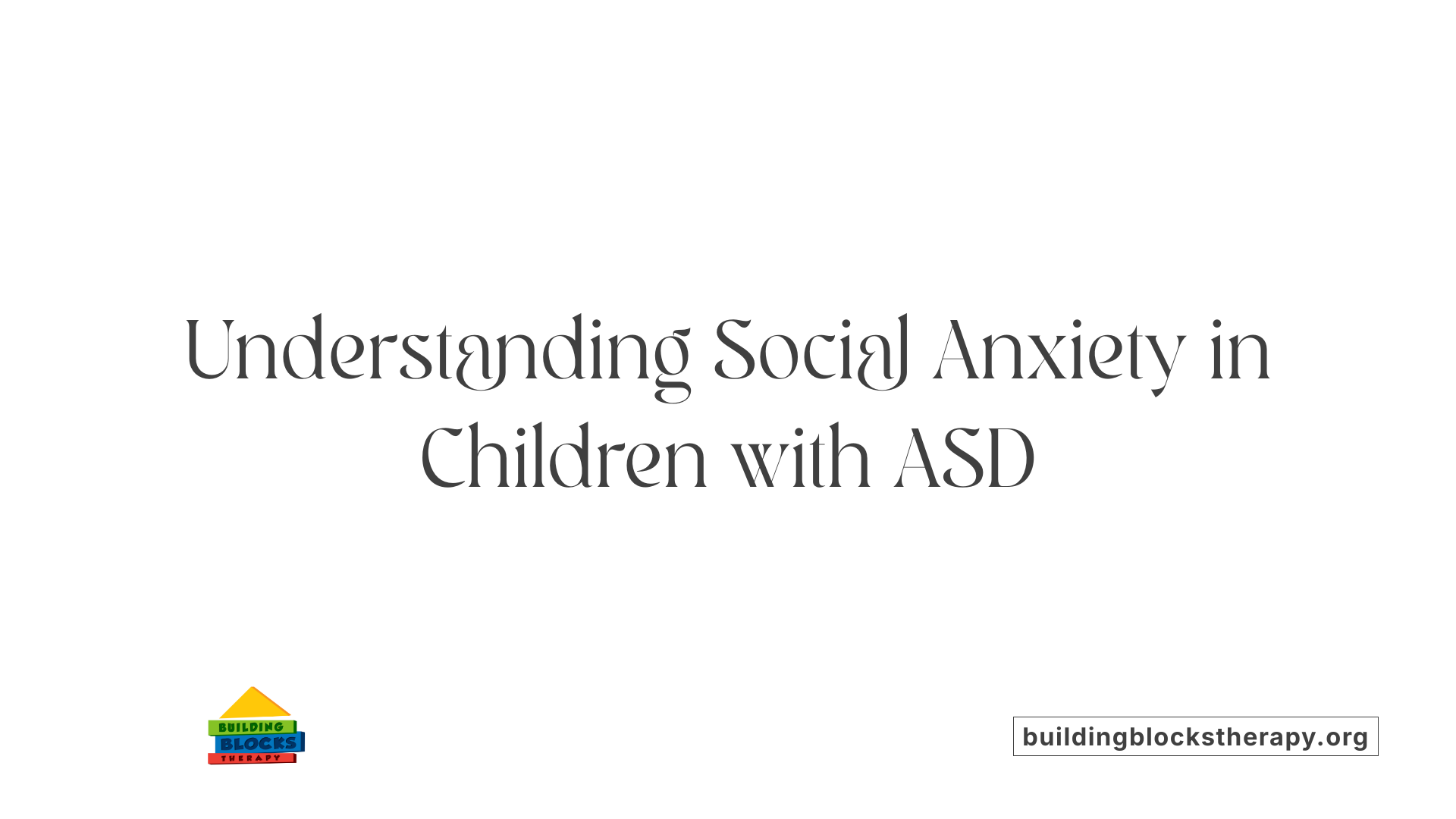
What is the prevalence of social anxiety in children with ASD?
Social anxiety is much more common in children with Autism Spectrum Disorder (ASD) Level 1 than in the general population. Around 50% of these children experience social anxiety, compared to only about 12% among their peers without ASD. This highlights how intertwined social difficulties and anxiety are for children on the autism spectrum.
Why do children with ASD struggle with social cues and develop anxiety?
Children with ASD often have trouble interpreting social cues, such as facial expressions, tone of voice, and body language. This challenge can lead to misunderstandings during interactions and heighten feelings of anxiety and insecurity. They may find it difficult to predict others' reactions, causing worry about being judged or embarrassed.
What are the physical and emotional signs of social anxiety?
Social anxiety in children can manifest both emotionally and physically. Emotionally, children may fear social judgment, embarrassment, or separation from caregivers. Physically, symptoms can include nausea, stomach aches, blushing, and trembling. These reactions can reinforce avoidance of social situations, making it harder to develop social skills.
How can social anxiety be distinguished from typical shyness?
While many children experience shyness at times, social anxiety becomes a concern when it significantly interferes with daily activities and social engagement for six months or more. Extreme shyness that prevents participation in group activities or causes intense fear in social settings may indicate social anxiety disorder. Recognizing this distinction is crucial for timely support and intervention.
Cognitive Behavioral Therapy (CBT): Tailoring Treatment for Children with Autism and Social Fears
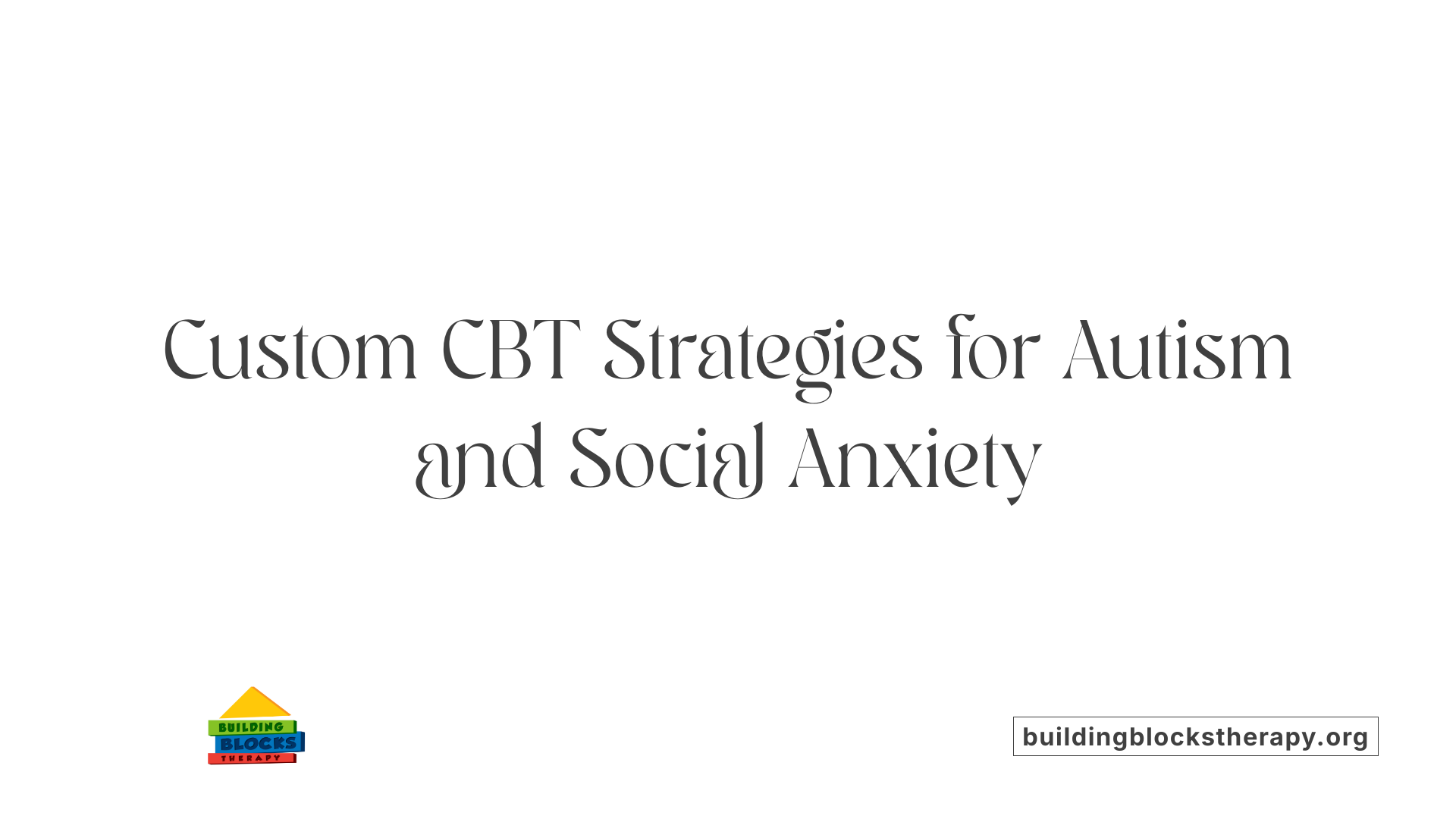
How does CBT help children with autism overcome social anxiety?
Cognitive Behavioral Therapy (CBT) adapted for children with Autism Spectrum Disorder (ASD) Level 1 focuses on helping them slow down and carefully examine anxious thoughts. By practicing social responses and understanding social rules, children learn to navigate social interactions more confidently. This approach gradually increases exposure to social challenges, building resilience and reducing anxiety over time.
What adaptations make CBT autism-friendly?
To meet the unique needs of children with autism, CBT incorporates concrete examples and visual supports. Role-playing exercises allow children to practice social skills in a safe, controlled environment. Family involvement is essential, as parents and caregivers help reinforce new skills and provide ongoing support. Written session summaries and addressing sensory sensitivities further personalize the therapy experience.
What are key CBT techniques and family involvement?
Therapy employs cognitive restructuring to help children identify and challenge anxious thoughts. Social skills practice and gradual exposure to anxiety-inducing situations promote bravery and competence. Mindfulness techniques encourage present-moment awareness, while environmental modifications create supportive settings. Family members participate actively, enhancing treatment success through encouragement and practice outside sessions.
Which specific CBT programs support children and adolescents?
The evidence-based Coping Cat program serves children aged 8 to 13 by teaching them to recognize anxious feelings and develop coping strategies. Camp Cope-A-Lot, an online adaptation for ages 7 to 13, offers interactive CBT modules with parent or therapist involvement in later sessions. For adolescents aged 14 to 17, the C.A.T. Project modifies Coping Cat with age-appropriate examples and illustrations to assist in anxiety management. These programs have shown clinically meaningful reductions in anxiety symptoms, fostering social confidence and emotional well-being.
Applied Behavior Analysis (ABA) Therapy: Principles and Application in Supporting Children with Autism
What is Applied Behavior Analysis (ABA) therapy and how is it used to support individuals with autism?
Applied Behavior Analysis (ABA) therapy is a science-based method focused on understanding and changing behaviors to improve social skills, communication, and independence. It carefully examines the relationship between antecedents (triggers), behaviors, and consequences to shape positive behaviors and reduce challenges.
Methods and techniques such as positive reinforcement and behavioral activation
ABA incorporates strategies like positive reinforcement, which rewards desirable behaviors to encourage their repetition. Behavioral activation, a key component, works by reducing avoidance behaviors linked to anxiety, replacing them with healthier, engaging activities.
Individualization and data-driven programming
Programs are customized for each person with autism, based on detailed observations and data collection. This ensures interventions fit the individual's unique needs and adjust dynamically with progress tracked over time.
How ABA helps manage anxiety and build skills
ABA therapy helps individuals recognize what triggers their anxiety and develop alternative coping methods. Through gradual and repeated exposure to challenging situations combined with reinforcement techniques, fear responses can diminish over time, allowing children to better manage stress and build confidence in social and daily activities.
Design, Implementation, and Providers of ABA Therapy for Children with Autism
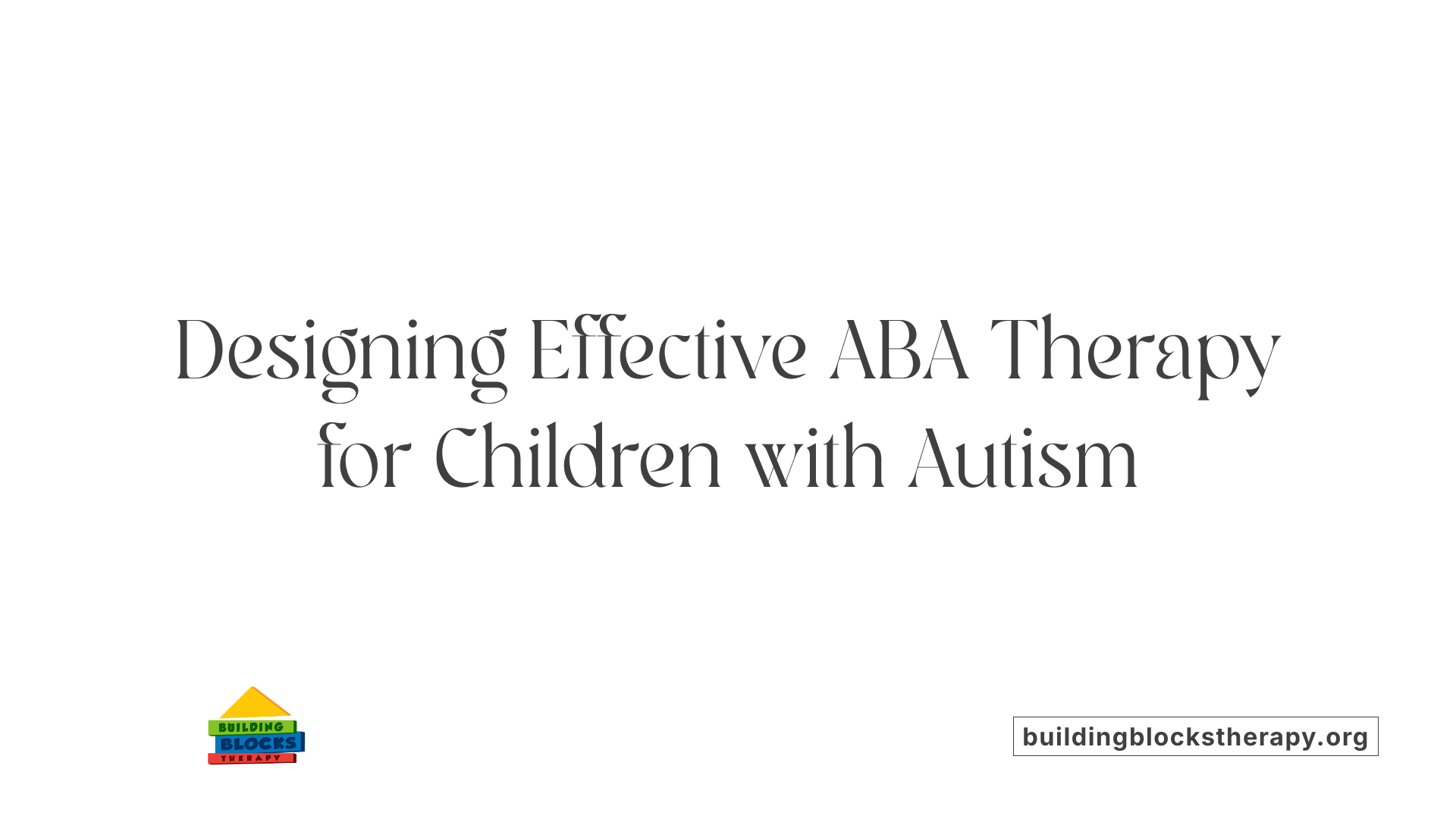
How is an ABA therapy program typically designed and implemented for a person with autism?
ABA therapy begins with comprehensive assessments that identify the individual's strengths, challenges, and skill levels. Board Certified Behavior Analysts (BCBAs) collaborate closely with families, educators, and healthcare professionals to establish personalized, measurable goals. These targets often include improving social skills, communication abilities, and daily living tasks.
Therapy sessions apply techniques such as positive reinforcement to encourage desired behaviors. Data is continuously collected to carefully monitor progress, allowing for ongoing adjustments to maximize effectiveness. ABA can be implemented in various environments including the home, school, and community settings. Sessions may be conducted individually or in groups based on the individual's needs.
Who typically provides ABA therapy and what qualifications do they have?
ABA therapy is delivered primarily by licensed specialists like BCBAs and Registered Behavior Technicians (RBTs). These providers usually hold degrees in psychology or related disciplines. Additionally, they complete supervised fieldwork and pass certification exams administered by the Behavior Analyst Certification Board (BACB).
State licensure may also be required, which ensures adherence to professional ethical standards and ongoing education requirements. Successful ABA therapists combine strong technical expertise with the ability to collaborate effectively with families and tailor interventions to each child's unique profile.
Therapeutic Techniques for Building Social Confidence and Managing Anxiety in Children
What key techniques in therapy help children build social confidence and manage social fears?
Therapists use several effective techniques to help children with ASD Level 1 and social anxiety. Cognitive restructuring is one technique where anxious thoughts are slowed down, examined, and challenged, helping children reframe how they view social situations. This reduces negative automatic thoughts that contribute to anxiety.
Social skills training is fundamental, enabling children to learn and practice important interaction abilities like making eye contact, engaging in conversations, and maintaining friendships. Programs such as PEERS (Program for the Education and Enrichment of Relational Skills) are evidence-based and specifically support youth with ASD, ADHD, anxiety, and depression. PEERS focuses on improving pragmatic skills related to social understanding and peer relationships, leading to greater social competence and confidence.
Gradual exposure or the "stepladder" approach involves slowly introducing children to anxiety-provoking social situations. This systematic exposure reduces fear responses over time by helping the child build tolerance and resilience in manageable steps.
Mindfulness techniques encourage awareness of present-moment experiences, fostering emotional regulation and reducing distress associated with social fears.
Importance of environmental adjustments and sensory sensitivity
Children with ASD often have sensory sensitivities which can increase discomfort in social settings. Tailoring environmental factors in therapy and daily life—such as minimizing overwhelming sounds or visual distractions—helps children engage more comfortably. Therapists also incorporate visual supports and concrete examples to clarify abstract social cues, making learning more accessible.
Family involvement and support are encouraged to create consistency and reinforce skills in natural settings.
Together, these therapeutic approaches create a comprehensive support system to build social confidence and reduce anxiety in children with ASD and social challenges.
Practical Steps and Professional Supports for Children Facing Social Anxiety and Shyness
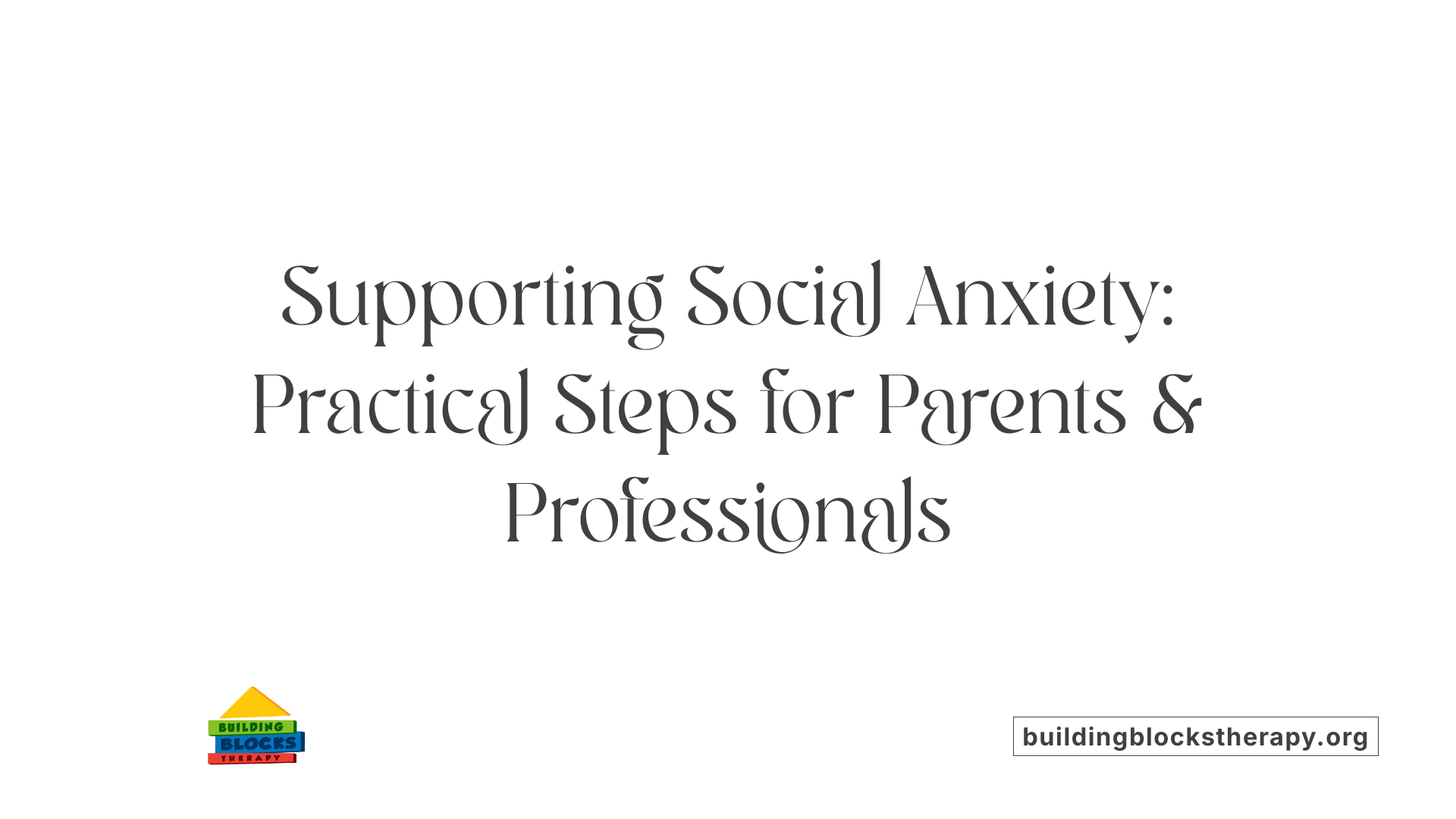
How can parents and professionals effectively support children with social anxiety and shyness?
Understanding the difference between normal shyness and social anxiety is essential. While shyness is common, social anxiety disorder involves extreme fear or worry about social situations that persist for more than six months and interfere with daily life. Recognizing these signals helps ensure children get the right support early.
One useful method for helping children is the 'stepladder' exposure approach. This technique gradually introduces social challenges in small, manageable steps, allowing children to build confidence over time. Alongside this, role-playing exercises let children practice social interactions in a safe environment, preparing them for real-life situations.
Professional support is widely available. Teachers, school counselors, general practitioners, pediatricians, and specialized anxiety clinics can provide guidance and interventions. Additionally, online programs like the BRAVE Program offer structured help tailored to children. For children aged five and older, services like Kids Helpline provide accessible online counseling.
Early intervention is vital. When parents actively participate in therapy and support their children, outcomes improve significantly. By understanding their child's feelings and preparing them for social settings, parents can foster resilience and social skills, helping their child navigate social anxiety more effectively.
Addressing Debates and Ensuring Ethical, Person-Centered Care in Autism Therapy
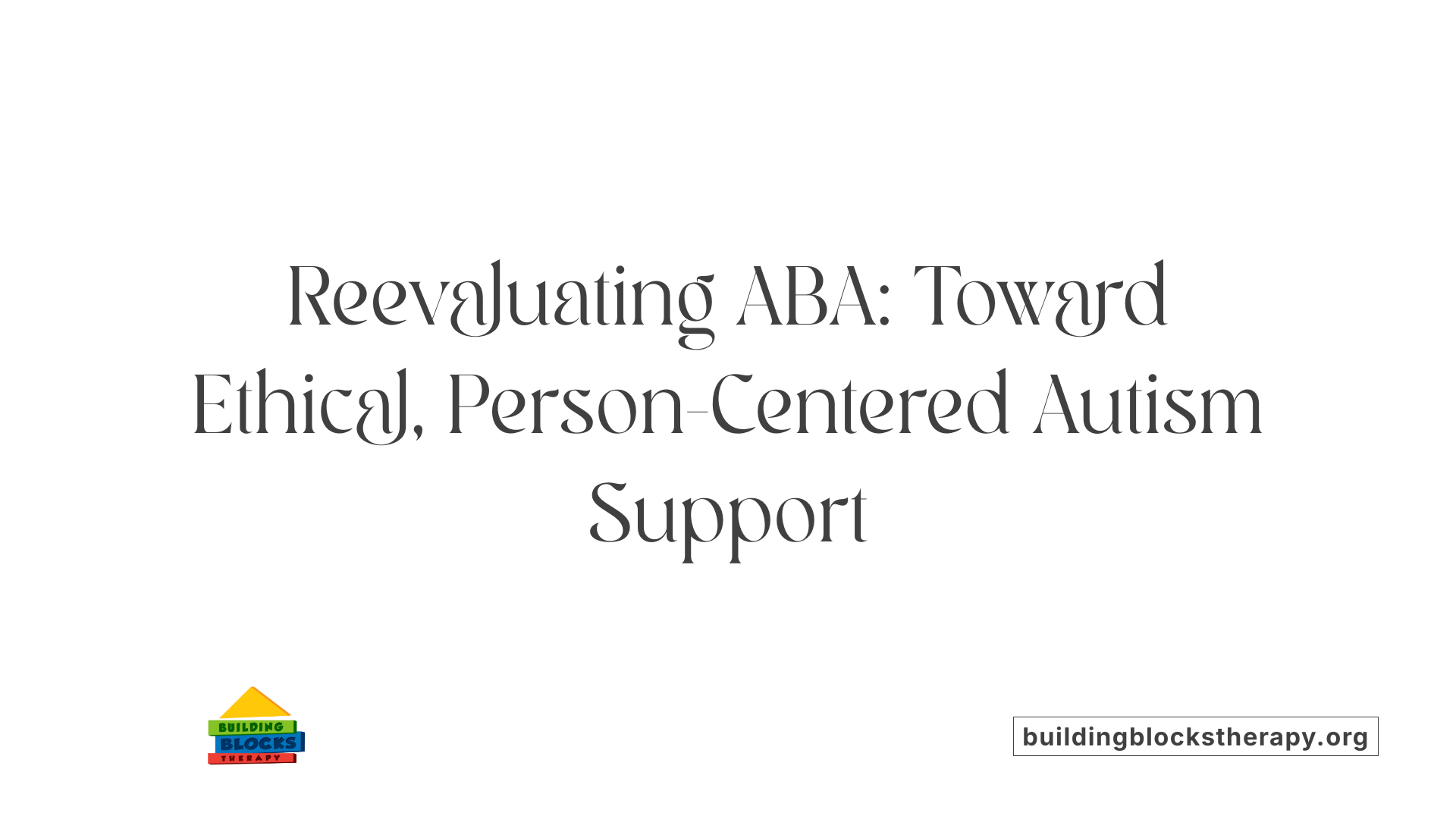
Are there any controversies or criticisms associated with ABA therapy?
ABA therapy, or Applied Behavior Analysis, has historically been criticized for its earlier use of aversive techniques that prioritized compliance, sometimes at the expense of the individual's emotional well-being. These methods were often seen as invasive and suppressive of natural behaviors that are important to a person's identity and self-expression.
Balancing behavior intervention with respect for neurodiversity
Modern ABA has shifted toward more ethical, person-centered care. Today, it emphasizes respect for neurodiversity by focusing on enhancing quality of life, promoting independence, and tailoring interventions to each individual's unique needs.
Importance of individualized, humane approaches
Individualization is paramount in contemporary therapy. Therapists now incorporate positive, play-based strategies and actively involve family supports to ensure interventions align with the person’s strengths and preferences. This humane approach fosters trust and encourages meaningful progress without compromising dignity.
Ongoing evolution of autism therapy practices
The field of autism therapy continues to evolve by integrating feedback from autistic individuals and their communities. This progress ensures that therapeutic practices remain evidence-based yet compassionate, balancing effectiveness with ethical responsibility.
Empowering Children Through Compassionate, Evidence-Based Therapy
Therapies such as Cognitive Behavioral Therapy and Applied Behavior Analysis, adapted thoughtfully for children with autism and social fears, are powerful tools for overcoming shyness and social anxiety. Through individualized strategies that incorporate family collaboration, gradual exposure, skill-building, and sensitivity to each child's unique profile, therapists can help children build social confidence and resilience. While acknowledging past controversies, modern approaches emphasize ethical, person-centered care that respects neurodiversity and prioritizes emotional well-being. Ultimately, early, tailored therapeutic support plays a crucial role in enabling children to navigate social worlds with greater ease and fulfillment.
References
- ASD Level 1 and Social Anxiety: Why They Of...
- Applied Behavior Analysis in Treating Anxiety Disorders
- Social Anxiety or ASD?: Evidence-based treatments for ...
- Social anxiety in children
- Applied Behavior Analysis (ABA)
- The Top 10 Reasons Children With Autism Deserve ABA
- Applied Behavior Analysis (ABA)
- 6 Benefits of ABA Therapy for Children with Autism





